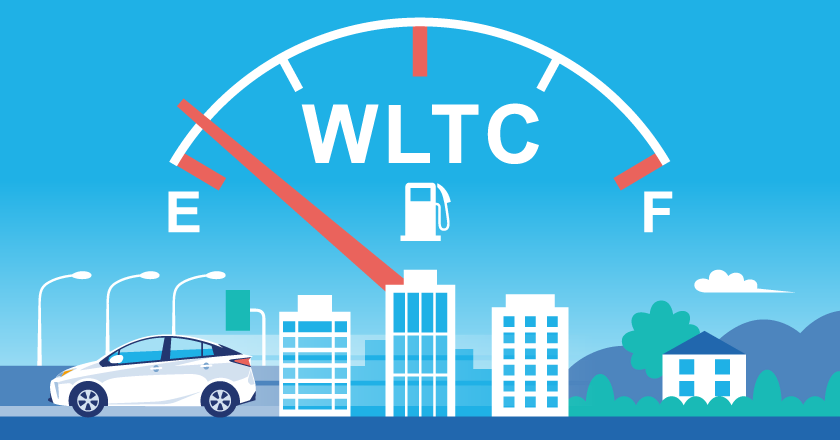WLTC Electric Range: A Guide to Its Importance and Impact on Electric Vehicles
Last Updated At: 2025-12-12 Author: Sarah
[Car Tech Knowledge/ XNmotors]
As electric vehicles (EVs) gain popularity, understanding how their range is determined has become increasingly important for both consumers and manufacturers. One of the key metrics used to measure an EV's range is the WLTC (Worldwide Harmonized Light Vehicles Test Cycle) electric range.

What is the WLTC?
The WLTC, or Worldwide Harmonized Light Vehicles Test Cycle, is part of the Worldwide Harmonized Light Vehicles Test Procedure (WLTP).
It is a standardized testing protocol used to determine fuel consumption, CO₂ emissions, and electric range for light vehicles, including both internal combustion and electric vehicles.
The WLTC was developed to replace the older NEDC (New European Driving Cycle), which was criticized for being outdated and unrepresentative of real-world driving conditions.
The WLTC is designed to provide a more accurate estimation of how a vehicle performs in a variety of driving scenarios. It is based on real-world driving data collected from various regions worldwide, ensuring it reflects typical usage patterns. For electric vehicles, the WLTC electric range measures how far an EV can travel on a full charge under standardized driving conditions.
How Does WLTC Measure Electric Range?
The WLTC electric range is determined through a series of test cycles conducted in controlled laboratory conditions. The test cycle includes four distinct driving phases: low, medium, high, and extra-high speed, which are intended to replicate different driving environments, such as urban streets, suburban roads, and highways.
The entire WLTC cycle lasts for about 30 minutes and covers a distance of approximately 23 kilometers.
The test involves the following key phases:
1. Low Speed (Urban Driving): This phase simulates driving in congested traffic, with frequent stops and starts, similar to driving in a busy city center.
2. Medium Speed (Suburban Driving): The vehicle is tested at moderate speeds, resembling driving in less congested areas.
3. High Speed (Main Roads): This phase simulates driving on main roads or highways at higher speeds, but with a mix of acceleration and deceleration.
4. Extra-High Speed (Motorway Driving): The vehicle is driven at speeds that reflect motorway conditions, with extended periods at high speeds.
The total distance covered and the energy consumed during these phases are used to calculate the electric range of the vehicle under the WLTC protocol. This approach is designed to give a more representative figure for how far an EV can travel under mixed driving conditions, which is closer to what a driver would experience in daily use.
Why is WLTC Electric Range Important?
1. Accurate Representation of Real-World Range:
- The WLTC is considered more representative of real-world driving than its predecessor, the NEDC. With its inclusion of a variety of speed phases, the WLTC electric range gives a better indication of how an EV will perform under diverse driving conditions.
- As a result, consumers can make better-informed decisions when choosing an electric vehicle, as the WLTC range closely reflects the distance they can expect to achieve in typical day-to-day driving.
2. Consumer Trust and Transparency:
- Providing an accurate estimation of an EV’s range is crucial for building consumer trust, especially since range anxiety is still one of the major concerns for potential EV buyers. The WLTC protocol helps bridge the gap between laboratory figures and actual driving experiences.
- By using WLTC range data, manufacturers can present more reliable range estimates, which helps reduce discrepancies between advertised and real-world performance, leading to improved transparency.
3. Comparability Across Models:
- WLTC range values make it easier to compare electric vehicles from different manufacturers. Since all vehicles are tested under the same standardized conditions, the resulting range figures provide a consistent basis for comparing EV models.
- This comparability allows consumers to better evaluate the suitability of various EVs for their specific needs, making it simpler to choose between competing options.
Factors Influencing WLTC Electric Range To Keep In Mind:
Even though the WLTC electric range is more representative of real-world conditions, several factors can still influence the actual driving range of an electric vehicle:
1. Driving Style: Aggressive driving, such as rapid acceleration and braking, consumes more energy and results in a lower range compared to a more consistent, smoother driving style.
2. Weather Conditions: Temperature has a significant impact on battery performance. Cold weather can reduce battery efficiency and thus the vehicle's range, while hot weather often necessitates higher air conditioning use, which also affects the range.
3. Terrain and Road Conditions: Driving uphill consumes more energy, and rough road surfaces create more rolling resistance, both of which reduce the overall range.
4. Vehicle Load: The weight of passengers and cargo affects energy consumption, with a heavier load leading to a decrease in the electric range.
WLTC vs. Other Testing Standards
While the WLTC is the dominant standard in many countries, other testing standards are also used around the world:
- EPA (U.S. Environmental Protection Agency): The EPA's test cycle is widely used in North America and is known for providing conservative and realistic range estimates. It tends to yield lower range numbers compared to WLTC because of more demanding driving conditions and stricter testing protocols.
- CLTC (China Light-Duty Vehicle Test Cycle): China uses its own standard, the CLTC, to test EV ranges. CLTC tends to report higher range estimates compared to WLTC, as the driving conditions used in testing are typically less demanding.
Understanding the differences between these testing protocols can help consumers interpret range figures depending on where they live or where a vehicle is manufactured.
Conclusion
The WLTC electric range is a critical metric for understanding the performance of electric vehicles. It provides a more realistic estimate of the distance an EV can travel on a full charge, which is crucial for consumer confidence, especially in overcoming range anxiety.
( Article / XNmotors Sarah )
Comments
No comments yet. Be the first one to comment.